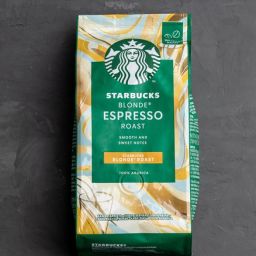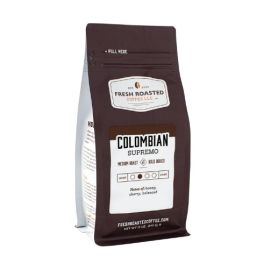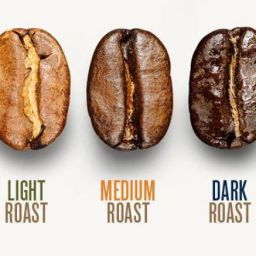
Low acid coffee brands are a game changer in the coffee world, especially for those who experience discomfort from the acidity found in traditional coffee. These brands focus on providing a smoother, gentler cup of joe that’s kinder on the stomach but doesn’t skimp on flavor. Whether it’s through specific bean selection, innovative roasting techniques, or unique processing methods, low acid coffee aims to deliver that beloved coffee experience without the unwanted side effects of acidity.
Why People Prefer Low Acid Coffee
People are turning to low acid coffee for a variety of reasons. For some, it’s a matter of comfort, as lower acidity can reduce the chances of heartburn, indigestion, or other gastrointestinal issues. Others find that low acid coffee offers a smoother, more palatable flavor profile, making their daily brew more enjoyable.
Additionally, those with certain dietary restrictions or health concerns might opt for low acid options to align with their wellness goals, making this type of coffee an inclusive choice for a wider audience.
Key Takeaways
- Overview of Low Acid Coffee Benefits: Enjoy your coffee without the worry of acid-related discomfort, embracing a cup that’s gentle on your stomach but full of flavor.
- Popular Low Acid Coffee Brands: Discover a range of brands like Lifeboost, Puroast, and Tieman’s Fusion, each offering unique blends and roasting methods to reduce acidity.
- Factors Influencing Coffee’s Acidity: Learn how the origin of the beans, their roasting process, and the type (Arabica vs. Robusta) affect the acidity levels of your brew.
- Tips for Choosing the Right Low Acid Coffee: Find out how to select the best low acid coffee that suits your taste preferences and meets your health and dietary needs.
What Makes Coffee Low Acid
Low acid coffee starts with the bean itself. Beans grown at lower elevations tend to have lower acidity levels. Moreover, the roasting process plays a critical role. Darker roasts typically have less acid than lighter ones because the longer roasting process breaks down more of the acidic compounds.
Some brands also use specific processing methods, like slow roasting or steaming the beans, to further reduce acidity. It’s a thoughtful combination of bean selection, cultivation practices, and roasting techniques that culminates in a cup of coffee that’s easy on the stomach yet rich in flavor.
The Health Benefits of Low Acid Coffee
Switching to low acid coffee can be a game changer for those sensitive to acidic foods or who suffer from conditions like acid reflux or GERD. This gentler brew can significantly reduce the likelihood of heartburn or gastrointestinal discomfort, making coffee enjoyment part of your routine without the side effects. Additionally, low acid coffee still packs in the antioxidants found in regular coffee, which are beneficial for combating inflammation and protecting against various diseases.
By choosing a low acid option, you’re not just doing your stomach a favor; you’re embracing a full-bodied coffee experience that’s mindful of your health and well-being.
Top Low Acid Coffee Brands
Lifeboost Coffee
Key Features: Lifeboost Coffee prides itself on offering single-origin, organic, low acid coffee beans. Their coffee is shade-grown in the highlands of Nicaragua, ensuring a naturally low acid content.
Pros:
- Single-origin and organic, ensuring high quality and sustainability.
- Naturally low acid, making it gentle on the stomach.
- A variety of roasts to suit different taste preferences.
Cons:
- Premium pricing, reflecting its organic and single-origin credentials.
Volcanica Coffee
Key Features: Volcanica Coffee specializes in exotic coffee from volcanic regions around the world, which naturally tend to be low in acid due to the mineral-rich soil.
Pros:
- A wide selection of beans from different volcanic regions.
- Commitment to freshness, with coffee roasted only after you order.
- Rich and unique flavor profiles associated with volcanic soil.
Cons:
- Some blends may be on the pricier side due to their exotic origins.
Puroast Coffee
Key Features: Puroast’s low acid coffee boasts a 70% lower acidity level than standard coffees, achieved through a unique roasting process.
Pros:
- Significant reduction in acidity benefits those with digestive sensitivities.
- Offers a variety of flavors and roast options.
- More antioxidants compared to regular coffee.
Cons:
- Flavor profile might differ from traditional coffee, which may not appeal to all.
Tieman’s Fusion Coffee
Key Features: Tieman’s stands out by infusing their coffee with matcha, rooibos, and goji berries, offering a unique blend that’s low in acid.
Pros:
- Innovative blend that provides additional health benefits.
- The infusion process offers a distinct, smooth flavor.
- Offers both caffeinated and decaf options.
Cons:
- The unique taste might not align with traditional coffee expectations.
- May be more expensive due to the specialized blend and ingredients.
Factors Influencing Coffee Acidity
The acidity of coffee can be influenced by various factors, starting with the origin of the beans. Beans from different regions carry distinct acidity levels; for example, African beans are often more acidic than those from South America. The roasting process also plays a critical role; darker roasts generally have lower acidity as the prolonged heat breaks down acidic compounds.
Lastly, the bean type matters — Arabica beans are typically less acidic than Robusta due to their growing conditions and inherent characteristics. Understanding these factors can help you navigate the world of coffee with an informed perspective, ensuring you pick a brew that’s just right for your palate and stomach.
How to Choose Low Acid Coffee
When choosing low acid coffee, consider your personal taste preferences first. Do you enjoy a bold, rich flavor, or something lighter and subtler? Next, think about health considerations; if you have a sensitive stomach or acid reflux, you’ll want to lean towards darker roasts or brands known for their low acidity levels.
Check the origin of the beans, as this can give you clues about their natural acidity. And don’t forget to look at the processing method — coffees labeled as low acid are often treated or roasted in a way that reduces their acidity. By keeping these factors in mind, you’ll be well on your way to finding a delicious coffee that agrees with your taste buds and your digestive system.
Brewing Techniques for Low Acid Coffee
To preserve the low acidity of your coffee, start with cold brewing; it naturally extracts less acid, making your coffee smoother. If you prefer hot coffee, opt for a French press; it allows for full immersion and less acidity extraction compared to drip machines. Also, monitor your water temperature; overly hot water can increase acidity, so aim for around 195-205 degrees Fahrenheit. Lastly, use fresh, filtered water to avoid introducing extra acidity through impurities.
FAQs
Is there such a thing as acid-free coffee?
While no coffee is entirely acid-free, some brands offer extremely low acidity levels through specific roasting processes.
Is French roast coffee low in acid?
Yes, French roast is typically lower in acid due to its darker roast level, which breaks down more acid during the roasting process.
How can I make my coffee less acidic?
Choose a dark roast, consider cold brewing, and use fresh, filtered water. Adding a pinch of baking soda can also neutralize acidity.
Final Thoughts
Choosing low acid coffee doesn’t mean compromising on taste. With the right brand, brewing method, and a bit of knowledge on bean origin and type, you can enjoy a delicious cup that’s gentle on your stomach. Whether you’re a fan of robust dark roasts or the nuanced flavors of single-origin beans, there’s a low acid coffee out there for you.









